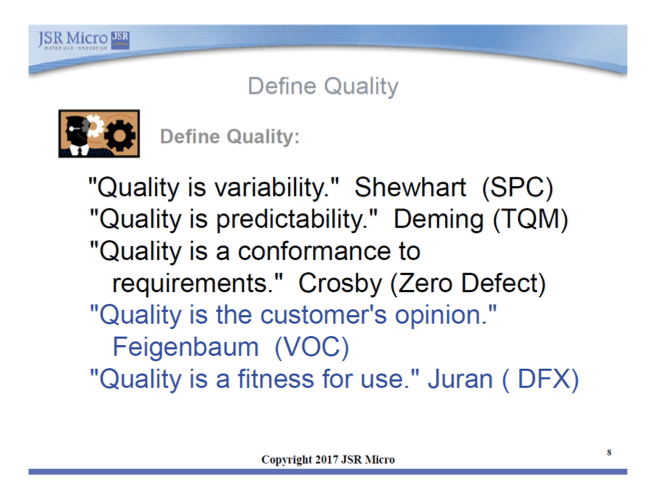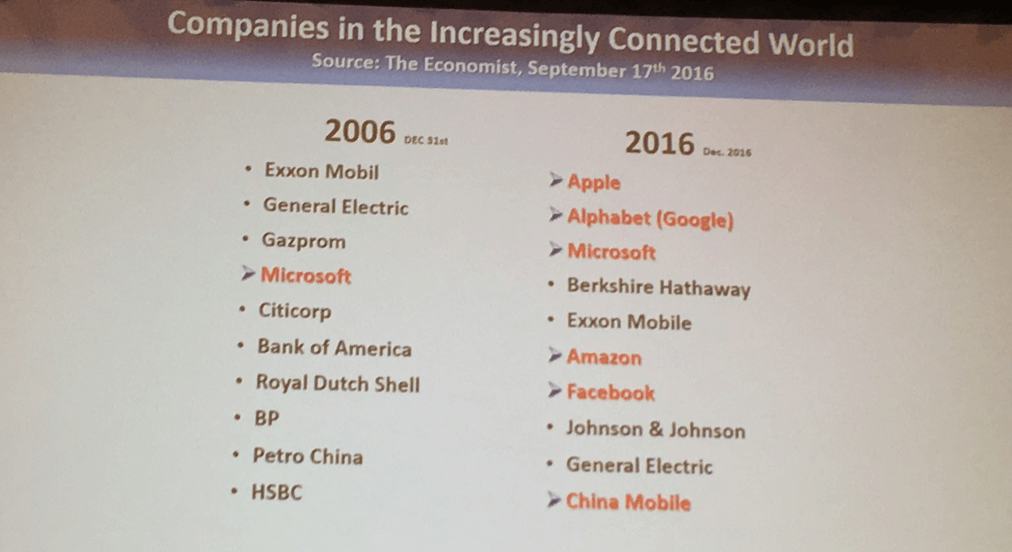San Francisco’s Moscone Center (above), the traditional home of SEMICON West trade shows, is undergoing major reconstruction work. Looking at this picture of the South Hall you may ask yourself: “Can anybody organize a large trade show here and make it a big success?” My answer is: “YES, the SEMI team can! They did exactly this in July for SEMICON West 2017!”
With some very creative space allocation methods and great cooperation from the 530 exhibitors, SEMI managed to fit the large SEMICON West show as well as Inter Solar North America into about half of the usual floor space using only the Moscone North and West buildings and offered a great show to 27,000 visitors.
Considering these organizational challenges as well as the breadth of subjects covered in depth at this event, the conference’s tag line: “SMART STARTS HERE“ is very appropriate.
Heterogeneous Integration Roadmap and imec’s ITF
Monday was again reserved for very complementary topics, such as the Heterogeneous Integration (HIR) workshop, managed by ASE’s Bill Chen, Bill Bottoms from 3MTS and SEMI’s Tom Salmon. This effort focuses on encouraging and coordinating the development of design and manufacturing technologies to enable continued semiconductor industry’s growth in the next 15 to 20 years. It replaces the ITRS roadmap – which was discontinued last year. I was a guest at this workshop and really liked their focus on heterogeneous integration, the strengths of multi-die ICs.
Bill Bottoms showed with this very telling slide how fast market leadership can change. Information technology companies, by market cap, have overtaken traditional major players in other industries and highlighted how market requirements and technology capabilities can force change quickly and radically and may leave traditional power houses behind.
Boeing’s Tim Lee talked about the ongoing 5G wireless efforts and the roll-out schedules: 5G will debut at the 2018 Winter Olympics in Korea and, at a much larger scale, at the 2020 Summer Olympics in Tokyo. The U.S. isn’t sitting still. Both Verizon and AT&T have been running field trials since 2016 and are getting ready to meet market needs for lower latency and high bandwidth wireless communication.
Who was, is and will be the main user of wireless communication capabilities? Lee reminded us that 3G and earlier generations of wireless were primarily used for human to human voice communication. 4G / LTE is being used primarily to transmit data, pictures and videos and some voice between humans. 5G is expected to serve primarily machine to machine communication…. and will further relegate the human touch to a tiny fraction of the overall information traffic.
On Monday afternoon, I managed to catch Arnaud Furnemont’s part of the imec Technology Forum (ITF). As imec’s memory director, he delivered an impressive message, “Beyond Conventional Memory Technologies”, and explained the maturity and trade-offs between different memory technologies as well as their suitability for specific applications. If you are working with imec, please ask your contact for his and other ITF presenters’ in-depth technical presentations and for access to these experts.
SEMI Press Conference
The regular SEMICON West conference started on Tuesday with an early morning press conference. Ajit Manocha, president and CEO of SEMI and Dave Anderson, President of SEMI Americas, welcomed the Media representatives and introduced the new SEMI Team and its activities and plans. What impressed me most, and made me really optimistic about the U.S. Semiconductor Industry’s future, is SEMI’s commitment to work with the U.S. government. They even have a dedicated employee, Jamie Girard, living in Washington, D.C., to be close to government agencies, represent our industry’s interests and influence federal decision making.
The best news during this press event was clearly SEMI’s summary of high growth projections from several reputable market forecasters: Semiconductor revenues will grow 12%, wafer fab equipment even 24%, materials 5% and electronic system design about 6% in 2017, compared to 2016. Increasing demand for memory and the continued ramp-up of China’s semiconductor industry will both contribute significantly.
Like in previous years, Dan Tracy gave a market outlook. He substantiated what other market researchers project: Significant growth in 2017 to about $ 400 Billion in semiconductor revenues. Tracy also projected continued market strength for 2018.
Keynotes and Panels
The keynotes and executive panels are always an important part of every trade show. On Tuesday morning Tetsuro Higashi, who joined Tokyo Electron in 1977, predicted a brilliant future for our industry if we can offer a great user experience and manage the security challenges arising. I personally liked to hear him predicting that heterogeneous functions (like logic, analog, DRAM, Flash, and MEMS), need to be further integrated to meet future system requirements. With this slide, he showed that electronic systems are becoming more like humans and can exceed the performance of individual human senses.

The second keynoter, GLOBALFOUNDRIES’ Tom Caulfield, Sr VP and GM of its Fab 8 in Malta, New York, reminded us that our industry has made enormous progress since the invention of the transistor, 70 years ago. Then he mentioned the importance of interdisciplinary cooperation and highlighted Globalfoundries’ strategic partnership with AMD, that enabled the development of AMD’s processors RADEON, EPYC, and RYZEN.
In the materials session on Tuesday afternoon Intel’s Archita Sengupta, Technologist, outlined her materials inspection work for a 14nm high-volume wafer fab. She recommended to already inspect materials at the vendor, target to bring the number of > 30 nm defects down and minimize processing down times by introducing very strict process control and material traceability measures.
Jim Mulready, VP of QA at JSR Micro, showed that quality can be defined in different ways:

The cost of quality, Mulready explained, is the sum of the cost of prevention measures, measurement, and failure recovery. He emphasized that quality must not be seen as a cost adder but as a way to add value to a product.
James O’Neil, CTO at Entegris, used tables of the period system to demonstrate the increasing number of materials used in wafer fabs to enable continued feature size shrinking. In the 1980s fabs used 11 different elements and added only 4 new ones in 1990. In the next decade fabs managed to deploy 45 additional elements for semiconductor manufacturing. More than half way through the current decade, fabs managed to add 7 more elements. O’Neil also compared the impact of scaling, design, and materials on device performance for 65 to 7nm designs. While scaling becomes significantly less important for increasing performance, the impact of architecture and design innovation is growing significantly. His slide also showed that materials clearly have the biggest impact on device performance, as geometries shrink to 7nm. O’Neil also showed a statement I really like. It’s very suitable for defect minimization and was coined by the astronomer Carl Sagen: “Absence of evidence is not evidence of absence.” Food for thought…
Nora Colligan, Principal Materials Engineer at Samsung, shared her experience and recommendations to solve material related challenges. She focused a major part of her talk on change point management and warned that any change in supplier, material, container or other factors can lead to surprises and increases in defects. Her limit for critical defects is > 20nm particle size.
Friends told me that Wednesday morning’s keynote speaker, Katherine S. Winter, Intel’s VP of the Automated Driving Group, impressed the audience with her “Big Data in Autonomous Driving” message. The slide below can convince everybody who isn’t yet realizing that for increased computing power and communications bandwidth requirements only the sky will be the limit.

As I was unable to attend the Intel Keynote because the Test Vision 20/20 Workshop was on my must-attend list, I will have to take their word for it. Part 2 of my SEMICON West coverage focuses on the workshop. ~ Herb





















